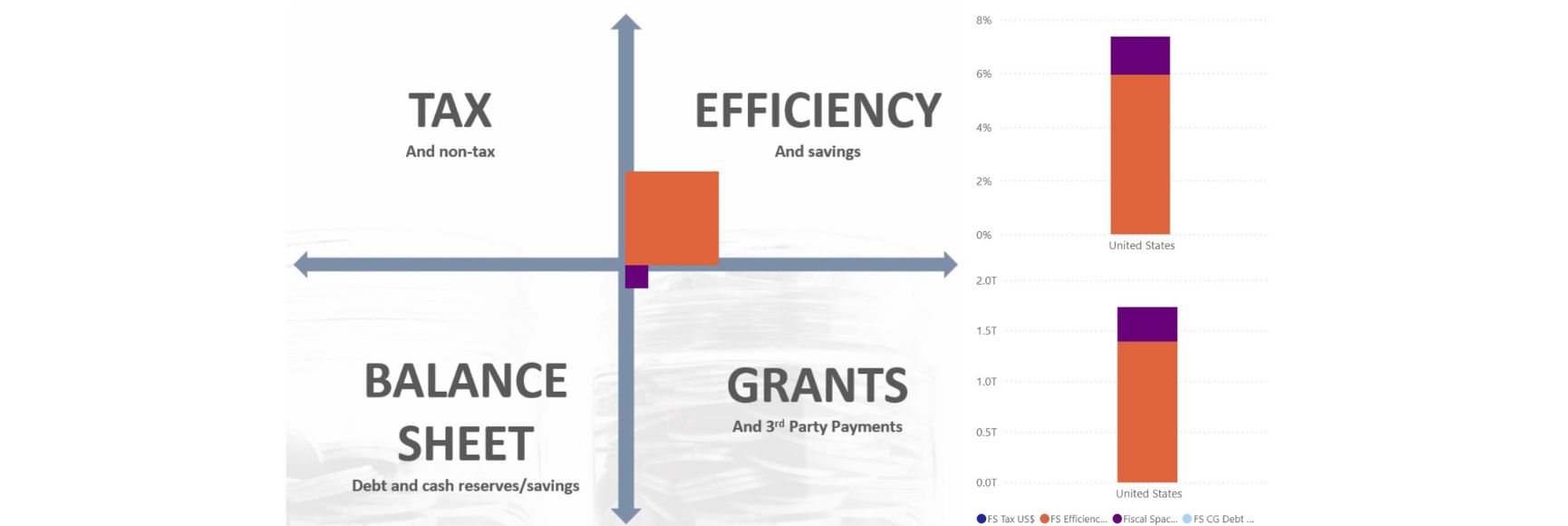Posted by Deanna Aubrey, PEMPAL PFM Adviser
Ministries of Finance from 18 Europe and Central Asia (ECA) countries met from March 27-29, 2012 at Lake Bohinj, in Slovenia, [1] to exchange experiences in program budgeting. The meeting was attended by 57 members of the Budget Community of Practice (BCOP) of the Public Expenditure Management Peer Assisted Learning (PEMPAL) network.[2] Presentations were delivered by the World Bank, IMF, and GIZ with reforms showcased from guest speakers from France, Australia, Slovenia, and Poland.
The World Bank clarified the terminology given the wide variety of terms in use (e.g., program budgeting, performance budgeting, results-based budgeting). Program budgeting applies to cases where expenditure is classified in the budget by objectives (outcomes and outputs) rather than solely by economic categories (i.e., inputs such as salaries) and organizational category. Performance budgeting (or performance-informed budgeting) refers to a wider set of initiatives intended to strengthen the links between the funds provided and the results achieved through ensuring performance information is used in resource allocation decision making. Program and performance budgeting reforms should, therefore, provide information in a way that informs choices about spending alternatives and should improve transparency and accountability of government.[3]
Most PEMPAL member countries have implemented elements of program budgeting including defining and identifying programs, formulating program objectives, allocating expenditures between programs, and selecting performance information. However, the quality of performance information remains generally poor, is in many cases not systematically monitored, and has limited influence on budget decision making.[4]
The IMF advised that simply generating performance information is not sufficient to influence budget decisions. Systematic performance reviews need to be implemented to evaluate the impact of programs on beneficiaries and citizens. Such comprehensive reviews which evaluate the effectiveness of major government spending programs can help provide evidence for expenditure rationalization and program improvements. Regular program monitoring and evaluation is also important to ensure that program performance information is used to improve allocative and operational efficiency of expenditure.[5] In the context of fiscal consolidation, the IMF recommended that improving performance and program budgeting capacity is not enough and other fiscal institutions have to be developed as part of a wider PFM reform process.
Performance information should form only part of a broader performance management framework. For example when considering reducing or cancelling a program, all possible impacts (e.g., external, structural, managerial, technical, cultural, and behavioural) should be considered.[6] Furthermore, performance indicators should be used in conjunction with other data. If used in isolation, they could give a distorted picture of actual performance or could actually distort public servants’ behaviour so that targets are met, but with a negative impact on citizens.[7]
The OECD[8] has categorized the approaches to integrating performance information into the budget process, ranging them from the weakest to strongest forms. In the weakest form, performance information is included in budget documents as background information and has no role in decisions on budget allocations. In the moderate form, performance information is used to inform, but not determine, budget allocations. This form is the most commonly used in the OECD. In the strongest form, resource allocation decisions are directly and explicitly based on units of performance, and appropriations are based on formulas or performance contracts. This form of performance budgeting is only used in specific sectors (e.g., the health sector) and in a limited number of OECD countries.
 PEMPAL members Kazakhstan, Russian Federation, Armenia, Croatia and Bosnia and Herzegovina outlined their progress; with these presentations followed by discussions on priority topics identified by members. The biggest challenge faced by many countries is that performance information is not used to inform budgetary decision-making. There is either too much information provided or the quality of the information is poor due to either lack of capacity, will, or information availability. A further impediment is the lack of acceptance of the reforms by line ministries. Therefore, discussions centered on how to strengthen the link between budget allocation decisions and performance information, how to ensure that line ministries adopt reforms, and what sequencing have countries used.
PEMPAL members Kazakhstan, Russian Federation, Armenia, Croatia and Bosnia and Herzegovina outlined their progress; with these presentations followed by discussions on priority topics identified by members. The biggest challenge faced by many countries is that performance information is not used to inform budgetary decision-making. There is either too much information provided or the quality of the information is poor due to either lack of capacity, will, or information availability. A further impediment is the lack of acceptance of the reforms by line ministries. Therefore, discussions centered on how to strengthen the link between budget allocation decisions and performance information, how to ensure that line ministries adopt reforms, and what sequencing have countries used.
A key summary of these discussions is as follows:
There is no ‘best practice’ approach, more ‘best fit’ and the unique context of each country needs to be considered. It was noted that some key public finance specialists (e.g., Schick 1997)[9] recommend getting the “basics” right first as a priority. Within the context of ‘best fit’ and getting the “basics” right first, the participants discussed a suggested sequence of reforms drawing from experiences from member countries and guest speakers and experts:
- Reforms must have political commitment and leadership to be effective and be implemented in the context of an overall Government’s strategic plan that provides clear top down priorities.
- Capacities of staff in Ministries of Finance should be strengthened first given that they are generally the drivers of reform.[10] The reform process should include internal audit from the beginning and include other key stakeholders (line ministries, civil society organizations, Supreme Audit Institutions). Technical assistance from donors and international experts should be sought where needed.
- A medium-term planning framework should be in place to ensure a planning horizon of more than one year.
- An incentive structure for line ministries to participate needs to be established. This should include an adequate legal framework that enforces implementation, with requirement for Ministry of Finance (MoF) to collect performance information from line ministries initially before stronger legislative requirements are considered. A systematic training program, that includes line ministries, budget committees of Parliament, and key civil society organizations, should be established. Broader awareness should be raised on the benefit and purpose of such reforms.
- Reforms should be piloted first to allow for an opportunity to learn from mistakes. However, many countries indicated a preference for full introduction to strengthen commitment to reform. Moving away from line-item budgeting takes time and needs to start with a simple definition of what a program is.[11]
- Once the program structures have been developed by line ministries and budget organizations (with assistance and guidance from the MoF), these structures should be reviewed across a number of budget cycles and refined where needed. The number of programs –often excessive at the inception of program budgeting– may need to be reduced if it proves an impediment to effective budget planning and management. Once the program structures have been refined, ideally, appropriations should be done on a program basis, paying due attention to the need for adapting budget execution procedures.
- Less is more: reforms should initially start with a few key indicators for different stakeholders that will be useful for their decision-making. To give credibility to the reforms, there is a need to ensure that the MoF uses performance information to make recommendations related to budget allocation decisions.
- ‘Weaker’ uses of performance information, as categorized by the OECD (see above), are still relevant to improve accountability and transparency. If stronger forms are introduced whereby budget allocations are directly determined by units of performance (e.g., contracts) there is a need to pilot them first.
- The reforms should ensure that spending unit managers are held accountable for financial and non-financial performance. To facilitate such accountability, programs can be kept within existing organizational boundaries, but in any case, responsibility for managing a program should be clearly assigned to a structure and a program manager. Delegation of budget planning and execution to managers requires assigning authority and flexibility to make resource decisions (within limits) to achieve specified results. This requires the introduction of some discretion in budget execution regulations, which should occur only if there are already established standards of reporting, control and performance.
- Improved budget reporting formats and templates that take into account the varying needs and expectations of different audiences (e.g., line ministry, MoF, Parliament, citizens) should be introduced. Other stakeholders in the budget process, such as Parliament, Audit Institutions and civil society organizations should be trained to be able to analyze the budget in a program format.
- The reform process should be monitored and evaluated. Internal audit could be used to review, refine, modify where necessary. Systematic reviews of program performance should be implemented.
- IT solutions that can assist in the budget planning and preparation process should be considered.
The participants acknowledged that such reforms are a long and ongoing process and even countries which are considered leaders and long-term practitioners of public sector performance management are continually refining and improving their performance framework. For example in the OECD, many of the 26 out of 34 countries that have implemented performance budgeting did so over a period of longer than a decade with ongoing, subsequent reforms continuing to be required.[12]
More PEMPAL meetings are envisaged on program budgeting with a focus on non-financial performance information and how to implement reforms at the local level. Guidelines from various countries were also identified and are being shared through the new PEMPAL virtual library (www.pempal.org).[13] A full set of the meeting materials is also available at the PEMPAL website with the overview, agenda, and list of participants.
[1] Lake Bohinj is Slovenia`s largest glacial lake. It is 4.2 kilometers long, one kilometer wide, and forty-five meters deep. Refer http://www.slovenia.info/
[2] PEMPAL is a network of public finance professionals from up to 21 countries who share information and practices in the areas of budget, treasury and internal audit. The Center of Excellence in Finance, Slovenia acts as the PEMPAL Secretariat and the current key financial and/or in-kind donors are the World Bank, Swiss State Secretariat for Economic Affairs (SECO), the Ministry of Finance of the Russian Federation, OECD/Sigma and GIZ.
[3] Source: Ivor Beazley, World Bank, ‘Performance budgeting - concepts and terminology’ presentation delivered PEMPAL BCOP meeting March 2012. Robinson (refer footnote 14) notes that program budgeting is one from of performance budgeting and warns against distinguishing between the two (page 15).
[4] Source: Deanna Aubrey, World Bank, ‘Status of Reforms: Results of pre-meeting survey of PEMPAL countries’, presentation delivered PEMPAL BCOP meeting, March 2012.
[5]Source: Brian Olden, IMF, ‘Program and Performance Budgeting Experiences from South East Europe: Their Role in the Fiscal Consolidation Process,’ presentation delivered PEMPAL BCOP meeting, March 2012.
[6] Source: Lewis Hawke, World Bank, ‘Public Sector Performance Management in Australia – is it successful?’ presentation delivered PEMPAL BCOP meeting March 2012.
[7] Source: Nick Manning, World Bank, ‘Improving the Contribution of Senior Staff to Program Performance’ presentation delivered PEMPAL BCOP meeting March 2012.
[8] Source: Ivor Beazley, World Bank, ‘Performance budgeting - concepts and terminology’ presentation delivered PEMPAL BCOP meeting March 2012 citing OECD classifications from Curristine, T. (2005), Performance Information in the Budget Process: Results of the OECD 2005 Questionnaire’ OECD Journal on Budgeting, 5(2), pp.88-131, Paris available at http://www.oecd.org/dataoecd/4/53/43480959.pdf .
[9] Source: World Bank, Public Expenditure Management Handbook, June 1998 extracted from http://www1.worldbank.org/publicsector/pe/handbook/pem98.pdf
[10] GIZ found that in OECD countries, reforms were driven in a third of the countries by the Ministries of Finance whereby another third, the reforms were driven by Parliament (see footnote 12).
[11] “Programs are groupings of government activities in relation to specific government objectives” IMF Manual for Fiscal Transparency (2007) source: http://www.scribd.com/khan7ven/d/27505756-Imf-Manual
[12] Source: Regina Bernhard, Deutsche Gesellschaft für Internationale Zusammenarbeit (GIZ), ‘Strategic Advisory Approach on Results-oriented budgeting’ presentation delivered PEMPAL BCOP meeting March 2012.
[13] As part of the meeting’s background materials, two documents were translated into the official languages of the network (English, Russian and Serb-Croatian ): Moving towards a Strategic Advisory Approach on the Introduction of Results-oriented Budgeting, by the Deutsche Gesellschaft für Internationale Zusammenarbeit (GIZ);and Performance-based Budgeting Manual, by Marc Robinson (CLEAR Training Materials translated with permission from the CLEAR (Center for Learning on Evaluation and Results) Secretariat. Copies can be found in the meeting materials.
Note: The posts on the IMF PFM Blog should not be reported as representing the views of the IMF. The views expressed are those of the authors and do not necessarily represent those of the IMF or IMF policy.





